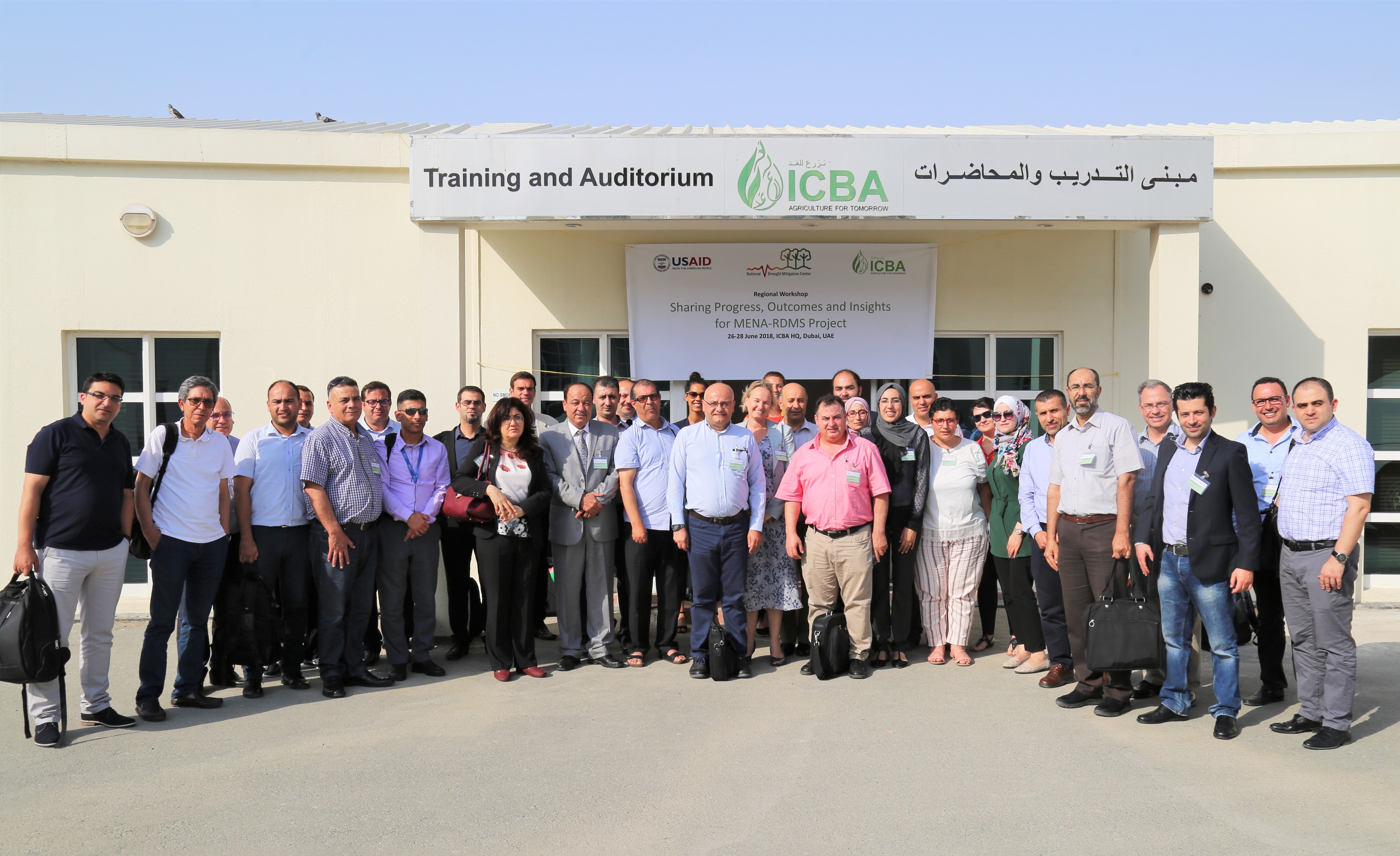
by Brianne Wolf | Institute of Agriculture and Natural Resources Global Engagement
Both in the U.S. and abroad, the National Drought Mitigation Center (NDMC) strives to help reduce the impact of drought on people, the environment and the economy.
The center takes the "ounce of prevention" adage seriously, advocating for the development of risk planning and management as the key to resilience in the face of drought, specifically in the Middle East and Northern Africa (MENA) region.
“In many places throughout the world, including sometimes in the U.S., drought is handled through crisis management, not proactive management,” said Cody Knutson, drought planning coordinator with NDMC. “Taking an integrated, systematic risk management approach, with monitoring systems that then trigger action in the event of a drought—that’s what helps places fare better moving forward.”
In collaboration with the International Center for Biosaline Agriculture (ICBA) and local consultants, NDMC works to help the area reduce the effects of drought events, focusing on Jordan, Lebanon, Tunisia and Morocco. The prospects of a hotter, drier future climate, combined with the complex political and population dynamics of the already water-stressed region, have brought this subject into sharper clarity.
“Even in Lebanon, where this has been a low political priority because of the widespread perception of being a water-rich country, recent drought events with a great deal of impact have increased the understanding of how important this planning is,” said Knutson. “This is one project that’s really actively working to build resilience to drought in the region.”
Now three years into the project, which is supported by the United States Agency for International Development (USAID), the team at NDMC and regional experts from ICBA have developed a regional Composite Drought Index monitoring tool for the MENA region. They have also worked with local stakeholders to conduct vulnerability and needs assessments in each of the four countries. Having long-term, consistent engagement in the area is essential, said NDMC director Mark Svoboda.
“Being in the region over a long period of time, taking cultural aspects into consideration, actively seeking feedback on their needs rather than just trying to prescribe something — these are all part of what makes it work,” he said. “If I’ve learned anything on the whole drought planning process, it’s that it takes time. It takes trust and transparency.”
In the current stage, they’re working to progress from just having early warning systems into the application of that information: how to reduce risk and impacts, how drought planning can be worked into their national policies on climate change and water, and how all of this can be used to make more informed decisions going forward, Svoboda said.
Drought in particular is so challenging because of its huge spatial and temporal footprint in an area, in addition to its crosscutting effects in both rural and urban life, the economy, public health and often national security. Whether direct or indirect, the impact of drought is rarely confined to one part of the world.
“It can become a global issue, like when the drought started in Syria; it’s hard to believe all it led to,” said Svoboda.
The lessons learned from the work done in Morocco, Jordan, Tunisia and Lebanon help those nations respond better to future droughts, and serve as a model to other nations in the region. This in turn can provide further insight on how to better address these challenges in other parts of the world, including the U.S. Ultimately, developing resilience in parts helps create a more resilient whole.
To learn more about the work and international reach of the National Drought Mitigation Center at the University of Nebraska-Lincoln, visit their website.
This article was originally featured in UNL's Institute of Agriculture and Natural Resources's Growing Magazine. Read more from the issue on resilience here.